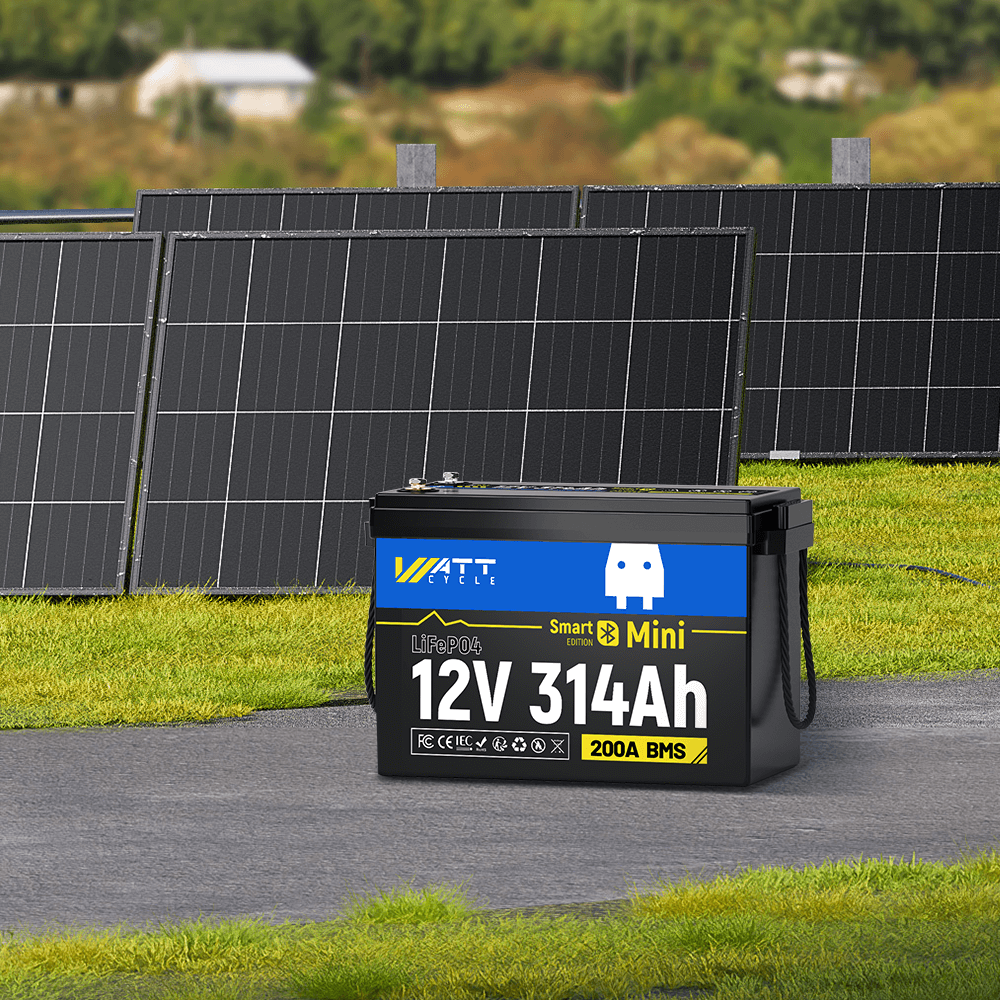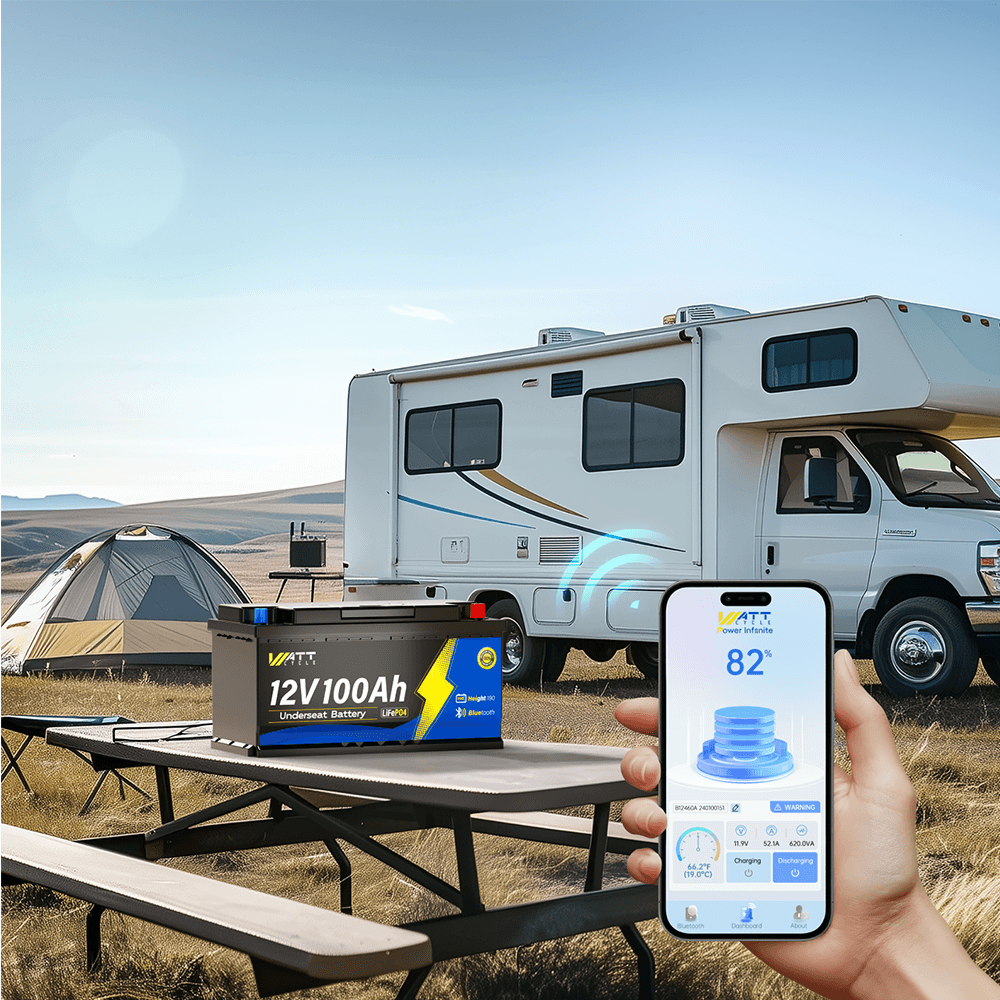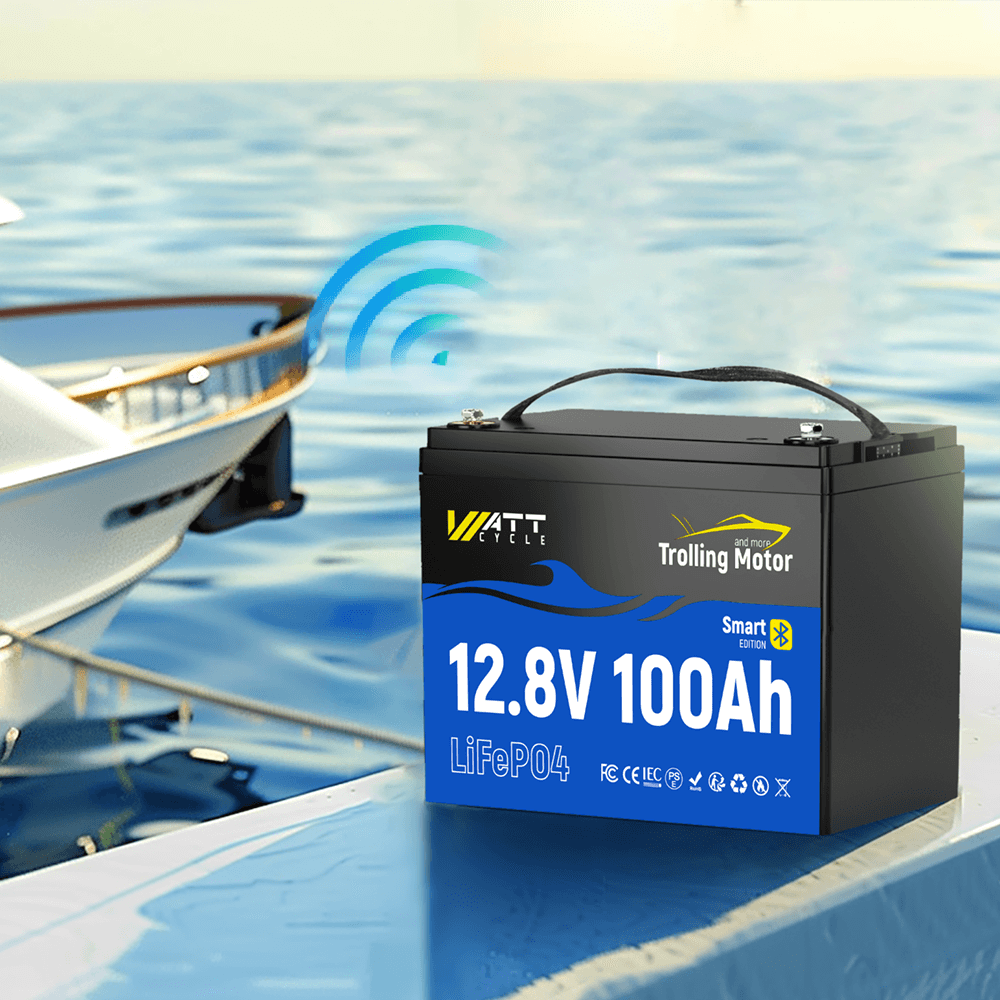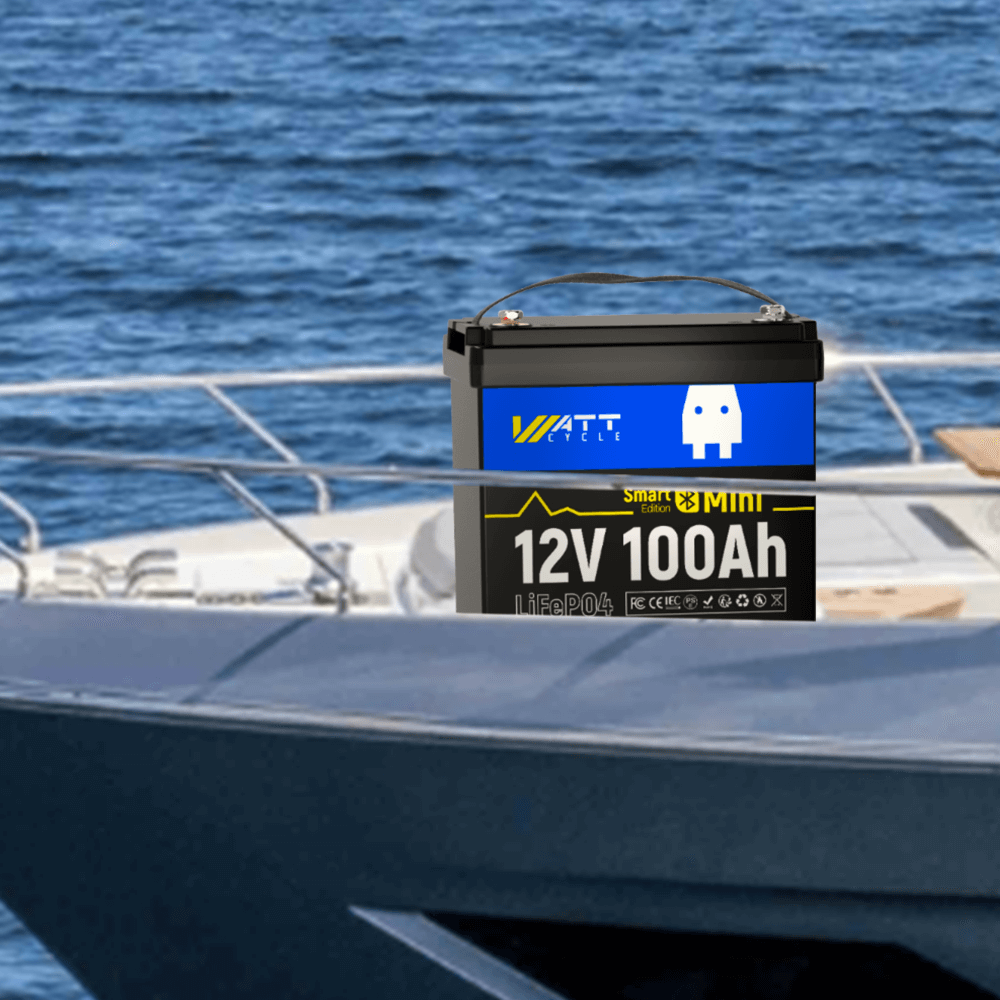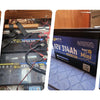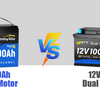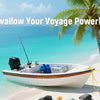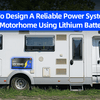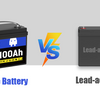How Do I Design a Reliable Power System for My Motorhome Using Lithium Batteries?
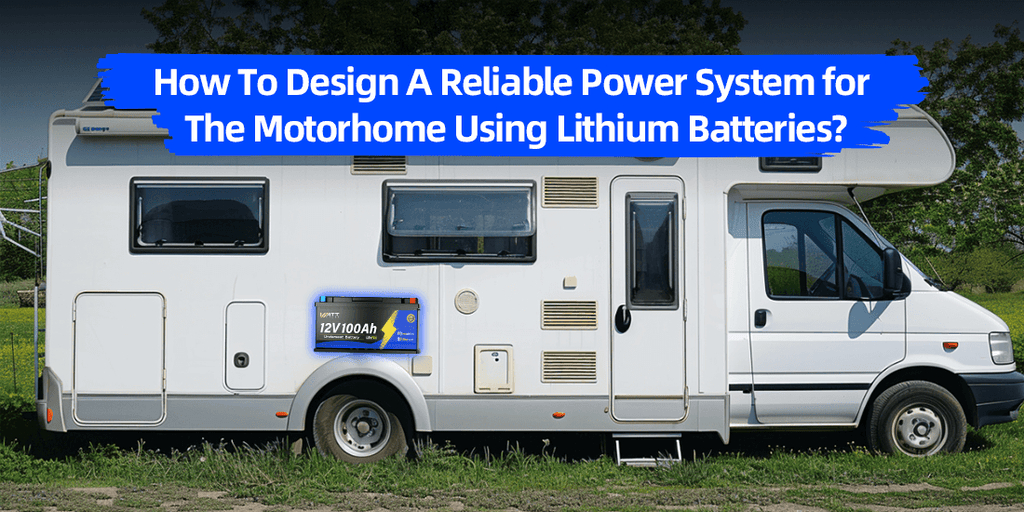
More travelers are turning to motorhome rooftop solar setups paired with reliable battery storage to stay powered anywhere the road takes them. The key to making it work long-term? Choosing the right battery.
At WattCycle, we build dependable deep cycle LiFePO4 lithium batteries designed specifically for motorhome life. Whether you’re charging up with solar or running appliances overnight, our batteries give you the confidence to go further without compromise. They’re lightweight, efficient, and built to handle the demands of modern off-grid travel.
In this guide, we’ll break down everything you need to design a power system that lasts—from sizing your battery to integrating solar and choosing the right components to make it all work.
Table of Contents
- Why Choose a LiFePO4 Battery for Your Motorhome Solar Setup
- Calculate Your Power Needs: Battery Capacity 101
- Matching Solar Panels to Your LiFePO4 Battery
- Choosing the Right Inverter and Charge Controller
- Wiring and Setup: Safe and Simple
- Build Battery Right, Travel Far
Why Choose a LiFePO4 Battery for Your Motorhome Solar Setup
Not all motorhome batteries are created equal. If you’ve used lead-acid or AGM batteries before, you’ve likely dealt with heavy weight, slow charging, and frustratingly short lifespans. That’s where LiFePO4 lithium batteries stand out—and why more motorhome owners are making the switch.
A deep cycle motorhome battery built with lithium iron phosphate (LiFePO4) chemistry offers real advantages when it comes to performance and reliability. Unlike traditional batteries, LiFePO4 models deliver:
- Longer lifespan: Up to 10 years or more, with thousands of charge cycles.
- Deeper usable capacity: You can safely discharge up to 80–90% without damaging the battery.
- Faster charging times: Spend less time waiting and more time moving.
- Lightweight design: Easy to install and won’t weigh down your motorhome.
- Stable and safe chemistry: No risk of thermal runaway or acid leaks.
When you’re building an off-grid setup with solar panels, a motorhome solar battery needs to store energy efficiently and handle daily charging and discharging without issue. WattCycle’s motorhome lithium batteries are designed for exactly that—giving you steady power whether you’re running lights, appliances, or charging your devices.
If you want a lithium battery for solar system use that’s built to last and built for travel, LiFePO4 is the clear choice.

Calculate Your Power Needs: Battery Capacity 101
Before you buy a battery, you need to know how much power you actually use. This step is the foundation of building a reliable motorhome solar setup—and it’s simpler than it sounds.
Step 1: List What You Use
Start by listing every device or appliance you run on a typical day. Include items like:
|
Appliance |
Amps (A) |
Hours per Day (H) |
Total Amp-Hours (Ah) |
|
LED lights (4 bulbs) |
1.5 |
4 |
6 |
|
Motorhome fridge |
5 |
8 |
40 |
|
Roof fan |
2 |
3 |
6 |
|
Phone charger |
1 |
2 |
2 |
|
Laptop |
3 |
2 |
6 |
|
Water pump |
4 |
0.5 |
2 |
|
Total Daily Use |
- |
- |
62 Ah |
This example adds up to 62 amp-hours per day. Add a 20–30% buffer, and you’re looking at around 75–80 Ah of daily usage.
Step 2: Choose the Right Battery Size
A traditional lead-acid battery shouldn’t be discharged below 50%, which means you'd need at least 160 Ah of capacity to meet this need.
But with a deep cycle LiFePO4 battery, you can safely use up to 90% of the rated capacity. So a 100 Ah motorhome lithium battery will easily cover your daily needs, with room to spare.
For solar setups, this efficiency matters. You want a lithium battery for solar system use that holds more usable energy without taking up extra space or weight.
Step 3: Think About How Long You’ll Be Off-Grid
If you’re parking off-grid for several days without sun, multiply your daily usage by the number of days to size your battery bank. For weekend trips, one or two motorhome solar batteries may be enough. Full-timers often go with 300 Ah or more to stay powered through cloudy days.
At WattCycle, we offer modular options so you can scale your battery setup as your needs grow.
Matching Solar Panels to Your LiFePO4 Battery
Once you’ve sized your battery, the next step is feeding it the right amount of solar power. A smart motorhome rooftop solar battery setup depends on matching your solar panel output to your energy needs—and making sure your battery can handle the charge.
How Much Solar Do You Need?
The solar panel’s job is to replace what you use each day. Let’s say your motorhome uses around 80 amp-hours daily, as in our earlier example. Multiply that by your battery voltage (typically 12V), and you get about 960 watt-hours (Wh) of daily usage.
To cover that with solar, you’ll need to factor in:
- Panel wattage: Common motorhome solar panels range from 100W to 200W each.
- Sunlight hours: Average 4–6 usable hours of sunlight per day, depending on season and location.
- System losses: Account for 15–20% loss in conversion and wiring.
So to produce around 1,000 Wh/day, a 300W–400W solar array is a solid starting point for most motorhomes.
Charging LiFePO4 Batteries with Solar
Unlike lead-acid batteries, LiFePO4 solar batteries accept a higher charging current and don’t need to be fully recharged daily to stay healthy. That makes them perfect for solar use, where input can vary.
To safely and efficiently charge your motorhome solar battery, make sure you’re using:
- An MPPT charge controller rated for LiFePO4 batteries: It maximizes solar input and protects the battery from overcharging.
- Proper voltage settings: Most 12V LiFePO4 batteries charge up to 14.4–14.6V and float around 13.6V.
- Correct wire gauge: Prevent voltage drop by using the right cable thickness, especially between panels, the controller, and the battery.
WattCycle’s lithium batteries for motorhome solar are built to integrate smoothly with modern solar equipment. With high charge acceptance and smart BMS (Battery Management System) protection, they handle solar input efficiently—day after day, mile after mile.
Choosing the Right Inverter and Charge Controller
A reliable motorhome solar battery setup isn’t just about storage—it also needs the right hardware to deliver usable power and manage charging safely. Two of the most important components are your inverter and your solar charge controller.
What Kind of Inverter Do You Need?
An inverter turns your battery’s 12V DC power into 120V AC—so you can run household appliances like microwaves, TVs, laptops, or even an air conditioner.
There are two main types:
- Pure Sine Wave Inverter: Delivers clean, consistent power. Best choice for sensitive electronics, medical devices, and modern appliances. Costs more, but worth it.
- Modified Sine Wave Inverter: Cheaper, but can cause issues with certain electronics. Not ideal for full-time motorhome use or high-end gear.
If your setup includes a LiFePO4 solar battery bank, it makes sense to pair it with a pure sine wave inverter that can handle higher loads efficiently. WattCycle batteries deliver steady voltage throughout discharge, which helps your inverter run smoothly for longer.
Why the Right Charge Controller Matters
The solar charge controller is what manages the flow of energy from your solar panels to your battery. It protects your motorhome lithium battery from overcharging, over-voltage, and even overheating.
There are two types to consider:
- PWM (Pulse Width Modulation): Budget-friendly but less efficient. Best for small or low-demand systems.
- MPPT (Maximum Power Point Tracking): The smarter choice. It adjusts constantly to get the most energy from your panels and charges your LiFePO4 solar battery more effectively.
WattCycle batteries work best with WattCycle MPPT controllers set to the correct charging profile. This ensures fast, safe charging and extends the life of your deep cycle motorhome battery.
Whether you're powering a weekend setup or building a full off-grid system, pairing the right inverter and charge controller with your battery bank is key to dependable energy on the road.
Wiring and Setup: Safe and Simple
Even the best motorhome lithium battery won’t perform well if your wiring is undersized, unsafe, or poorly installed. A good setup doesn’t need to be complicated, but it does need to be done right.
Wire Gauge, Fuses, and Breakers
Use wires that can handle the current your system will carry. Undersized cables can overheat and cause voltage drops—or worse, fires.
- 12V systems: For currents up to 50A (like to an inverter), use 6 AWG or thicker.
- 100A or more: Use 2 AWG or even 1/0 AWG.
- Battery-to-inverter connections: Always go thick—these carry high loads.
Every major connection should be protected with:
- Fuses (rated slightly above the expected current)
- DC breakers (for safety and maintenance access)
Place fuses as close to the battery as possible, especially on the positive lead.
Avoid Common DIY Mistakes
- Don’t skip the fuse—ever.
- Don’t crimp without proper tools. Loose terminals cause resistance and heat.
- Avoid tight bends or over-tightening on lugs—especially with LiFePO4 solar battery banks.
- Label everything, and keep your wiring neat for safety and easy troubleshooting.
A clean, well-thought-out setup ensures your deep cycle motorhome battery delivers the reliable performance it’s built for—without headaches down the line.

Build Battery Right, Travel Far
Designing a reliable motorhome power system doesn’t need to be overwhelming—but it does require smart planning. When you take the time to size your battery, match your solar input, and wire everything safely, you set yourself up for stress-free travel, no matter how far off the grid you go.
At the heart of it all is your battery. A high-quality motorhome solar battery isn’t just about convenience—it’s about freedom. That’s why more motorhome owners are choosing WattCycle’s LiFePO4 lithium batteries. Built for deep cycles, fast charging, and long life, they give you dependable power wherever the road leads.
Whether you’re upgrading your first rig or building a full solar setup from scratch, the WattCycle motorhome LiFePO4 battery makes it simple to power up with confidence.

